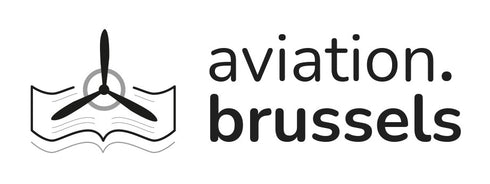Guide to HOMEBUILTS
Product image 1

Product image 2

Product image 3

Product image 4

Product image 5

Product image 6

Prix régulier 40,00 € TTC 6%
This fine book, which contains some photographs and precious details as well, is a guide that will give you both the means and informations to know how to build your own aeroplane.
Caractéristiques
| Format | 21 x 14 x 1 cm |
| Nbr. de pages | 132 |
| Finition | Broché et Agrafé |
| Année d’édition | 1962 |
| Langue | Anglais |
| Etat du livre | Un petit peu abîmé |
| Auteur | Peter M. Bowers |
| Collection / Série | MODERN AIRCRAFT SERIES |
| Editeur | Sports Car Press |
Description
Aviation book
1. History
Amateur building of aircraft for recreational purposes began shortly after heavier - than - air flying becale a reality. As early as 1910 such ’ do - it - yourself ’ magazines as Popular Mechanics were publishing plans for simple hang gliders, and the 1912 edition of Hayward's general aviation text, ’ Practical Flying ’, presented plans for both the Curtiss biplane and the Blériot monoplane. However, there was at this time little distinction between the amateurs, the serious experimenters, and some of the would - be manufacturers, so the actual hobby aspect of do - it - yourself aviation can be considered as originating shortly after the end of the First World War.
With thousands of wartime trainers and scouts available at low surplus prices, there was little purpose in building an airplane just to get into the air or to save money. The amateur builder's motivation was to have something different, to work out his own ideas, or just to experience the thrill of taking to the air in a machine of his own creation.
Extract from page No. 5.
Peter M. Bowers ( May 15th, 1918 - April 27th, 2003 ) has been an avid aviation enthusiast since early childhood. After two years of engineering study at Junior College, he enrolled in Boeing School of Aeronautics in 1940 for two years of aeronautical engineering. He entered the U.S. Army Air Corps as an Aviation Engineering Cadet, and received a commission as an Engineering Officer. Peter M. Bowers was put in charge of the Army's aircraft recognition programme the year after the Second World War.
Discharged as a Captain, he then joined the Boeing Company in Seattle ( where he lived most of his life ) as a research engineer. He received his pilot's licence in 1948.
Peter M. Bowers is famed in the general aviation community for his work with General Aviation News. Writing 26 books and over 800 articles detailing historic aircraft for a column called Of Wings and Things, Peter M. Bowers was a fixture of the newspaper for decades. He was an avid aviation photographer and also designed homebuilt aircraft such as the Fly Baby and Namu II. He also completed and flew a Detroit G1 Gull primary glider. He served as a contributing editor for Sentry Publications' twin magazine titles Wings and Airpower, drawing on a lifetime of aviation photographs of his own, and of a vast archive collected through his employment at Boeing.
Peter M. Bowers died from cancer in 2003.
( sources : Wikipedia, UNITED STATES MILITARY AIRCRAFT since 1909 )
1. History
Amateur building of aircraft for recreational purposes began shortly after heavier - than - air flying becale a reality. As early as 1910 such ’ do - it - yourself ’ magazines as Popular Mechanics were publishing plans for simple hang gliders, and the 1912 edition of Hayward's general aviation text, ’ Practical Flying ’, presented plans for both the Curtiss biplane and the Blériot monoplane. However, there was at this time little distinction between the amateurs, the serious experimenters, and some of the would - be manufacturers, so the actual hobby aspect of do - it - yourself aviation can be considered as originating shortly after the end of the First World War.
With thousands of wartime trainers and scouts available at low surplus prices, there was little purpose in building an airplane just to get into the air or to save money. The amateur builder's motivation was to have something different, to work out his own ideas, or just to experience the thrill of taking to the air in a machine of his own creation.
Extract from page No. 5.
Peter M. Bowers ( May 15th, 1918 - April 27th, 2003 ) has been an avid aviation enthusiast since early childhood. After two years of engineering study at Junior College, he enrolled in Boeing School of Aeronautics in 1940 for two years of aeronautical engineering. He entered the U.S. Army Air Corps as an Aviation Engineering Cadet, and received a commission as an Engineering Officer. Peter M. Bowers was put in charge of the Army's aircraft recognition programme the year after the Second World War.
Discharged as a Captain, he then joined the Boeing Company in Seattle ( where he lived most of his life ) as a research engineer. He received his pilot's licence in 1948.
Peter M. Bowers is famed in the general aviation community for his work with General Aviation News. Writing 26 books and over 800 articles detailing historic aircraft for a column called Of Wings and Things, Peter M. Bowers was a fixture of the newspaper for decades. He was an avid aviation photographer and also designed homebuilt aircraft such as the Fly Baby and Namu II. He also completed and flew a Detroit G1 Gull primary glider. He served as a contributing editor for Sentry Publications' twin magazine titles Wings and Airpower, drawing on a lifetime of aviation photographs of his own, and of a vast archive collected through his employment at Boeing.
Peter M. Bowers died from cancer in 2003.
( sources : Wikipedia, UNITED STATES MILITARY AIRCRAFT since 1909 )







